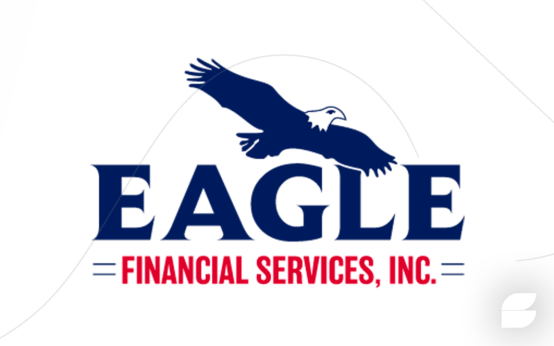Hey there, savvy savers and financial enthusiasts! Today, we’re diving deep into the fascinating world of interest rates and how they work in the realm of savings accounts.
Whether you’re just starting your financial journey or looking to optimize your existing savings strategy, understanding interest rates is a crucial aspect of managing your money wisely.
So, let’s roll up our sleeves and explore the ins and outs of this fundamental financial concept!
What are interest rates?

An interest rate is the cost of borrowing money or the return on investment for lending money. When it comes to savings accounts, it refers to the percentage your bank pays you as a reward for keeping your hard-earned cash with them.
Think of it as a little bonus that encourages you to save rather than spend all your money immediately.
Now, you might be wondering, “How do banks determine these interest rates?” Well, several factors come into play.
The economy’s overall health, the central bank’s policies, and the demand for loans are just some of the influences. When the economy is thriving, banks are more inclined to pay higher interest rates to attract deposits, since they can then lend that money to borrowers at a profit. Conversely, during economic downturns, interest rates tend to drop as banks seek to stimulate borrowing and spending.
Types of savings accounts
Before we delve further into interest rates, it’s essential to understand the various types of savings accounts available to you. Each type comes with its unique features, which can affect the interest rate you earn.
Basic Savings Accounts
These are no-frills, simple savings accounts that typically offer lower interest rates. They are a safe option for parking your emergency fund or short-term savings.
High-Yield Savings Accounts
As the name suggests, these accounts offer higher interest rates than basic savings accounts. In exchange, they may require higher minimum balances or have more restrictions.
Certificates of Deposit (CDs)
CDs are time-bound savings accounts where you agree not to touch your money for a fixed period, ranging from a few months to several years. They often provide higher interest rates, rewarding you for leaving your funds untouched.
The impact of compounding
Now, let’s talk about the magic of compounding. No, it’s not an arcane art; it’s a simple yet powerful concept that can significantly boost your savings.
Compounding occurs when you earn interest on both your initial deposit and the interest you’ve already earned. In simpler terms, you’re earning interest on your interest!
For example, let’s say you deposit $1,000 in a savings account with a 5% annual interest rate. After the first year, you’ll have $1,050. In the second year, you won’t only earn 5% on your initial $1,000 but also on the additional $50 you earned in interest the previous year.
This compounding effect snowballs over time, helping your savings grow faster.
Tips for maximizing your savings account interest

Now that we’ve grasped the basics, let’s explore some strategies to make the most of your savings account interest rates.
Shop Around
Don’t settle for the first savings account you come across. Different banks offer different interest rates and account features. Take the time to compare various options and find the one that suits your needs best.
Maintain a Healthy Balance
Some high-yield savings accounts require a minimum balance to access the advertised interest rate. Be sure to check the account requirements and aim to maintain the minimum balance consistently.
Consider CDs for Long-Term Savings
f you have money you don’t need to access immediately, CDs can be a fantastic option. Their higher interest rates and fixed terms can offer excellent returns over time.
Automate Your Savings
Set up automatic transfers to your savings account on each payday. This habit ensures you consistently contribute to your savings and capitalize on compounding growth.
Keep an Eye on Rate Changes
Interest rates can fluctuate over time, so it’s crucial to stay informed. If you notice your bank’s rates dropping significantly, consider exploring other options.
Congratulations! You’ve now graduated from Savings Account Interest Rates 101. Understanding how interest rates work and how they affect your savings account is a powerful tool on your journey toward financial freedom.
Remember, it’s not just about finding the highest interest rate; it’s also about aligning the account features with your financial goals and needs. So go forth, make informed decisions, and watch your savings flourish like never bef



 FIT Mastercard <p class='sec-title' style=' font-weight: normal; line-height: 1.9rem !important; font-size: 17px !important;'> Discover the Power of FIT Mastercard </p>
FIT Mastercard <p class='sec-title' style=' font-weight: normal; line-height: 1.9rem !important; font-size: 17px !important;'> Discover the Power of FIT Mastercard </p>  Apply for a personal loan with Eagle Financial: step-by-step <p class='sec-title' style=' font-weight: normal; line-height: 1.9rem !important; font-size: 17px !important;'> Discover how to have the necessary funds to buy an asset you've always dreamed of </p>
Apply for a personal loan with Eagle Financial: step-by-step <p class='sec-title' style=' font-weight: normal; line-height: 1.9rem !important; font-size: 17px !important;'> Discover how to have the necessary funds to buy an asset you've always dreamed of </p>  How to get a loan with Capital One? <p class='sec-title' style=' font-weight: normal; line-height: 1.9rem !important; font-size: 17px !important;'> This guide is for you who wants a car with a loan </p>
How to get a loan with Capital One? <p class='sec-title' style=' font-weight: normal; line-height: 1.9rem !important; font-size: 17px !important;'> This guide is for you who wants a car with a loan </p>